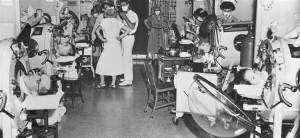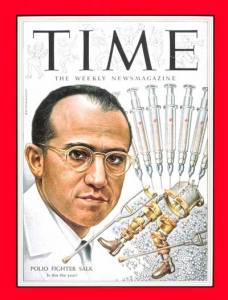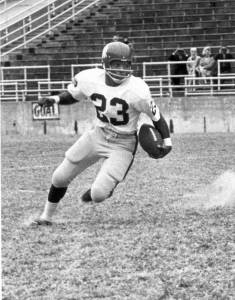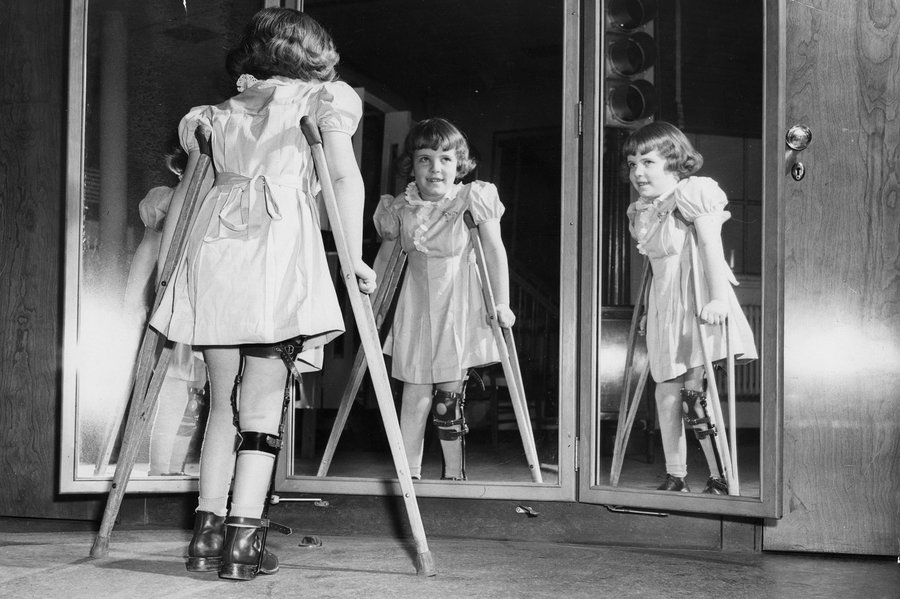Given that both of my parents are deceased, I have no way of learning more about the earliest part of my life. A pediatrician apparently thought I might have polio or another debilitating disease of the lower extremities, and so the decision was made to strap some leather-and-metal braces on each of my legs. It was common therapy for polio at the time, along with grafting, tendon- and ligament-lengthening, and hot packs, all meant to preclude muscle atrophy and recruit nerve cells that had not been killed by the polio virus. How much of this other stuff was done to me, I have no idea. I was so young that I do not retain even the vaguest memories—never have I seen a photo of me wearing those braces—but I was later told that they were painful. I wailed almost non-stop for two years, at which point they were removed. The whole thing must have been very unpleasant.
Withered limbs
I was born on December 9, 1952 at Baylor Hospital, Dallas, Texas. This means that I arrived just when the U.S. polio epidemic was peaking. Let’s take a quick look at the history of poliomyelitis, an inflammation of nerves in the spinal cord. It started before recorded history; an Egyptian stele from 1400 BC is thought to represent a cane-wielding victim. Epidemics arose and dissipated, and with the arrival of Europeans in  the New World, it was more of the same there. In the 20th century, polio became more regular, killing people and leaving others with withered limbs. A particularly bad year was 1916. Some 27,000 cases (including 6,000 deaths) were reported in the U.S. Americans—especially those living in urban areas—were scared out of their wits, as the nature of the disease was largely a mystery. Placards were placed in front of homes of confirmed polio cases, quarantines were set up, movie theaters were closed, public gatherings were discouraged, children were warned not to drink from public water fountains, and community sanitation was encouraged. While the latter is always a good idea, it did not facilitate the eradication of polio.
the New World, it was more of the same there. In the 20th century, polio became more regular, killing people and leaving others with withered limbs. A particularly bad year was 1916. Some 27,000 cases (including 6,000 deaths) were reported in the U.S. Americans—especially those living in urban areas—were scared out of their wits, as the nature of the disease was largely a mystery. Placards were placed in front of homes of confirmed polio cases, quarantines were set up, movie theaters were closed, public gatherings were discouraged, children were warned not to drink from public water fountains, and community sanitation was encouraged. While the latter is always a good idea, it did not facilitate the eradication of polio.
The outbreaks were even more serious in the 1940s, but scientists were working zealously to find a cure. They included Claus Jungeblut, Maurice Brodie, John Enders, Thomas H. Weller, Frederick C. Robbins, Fred Klenner, Albert Sabin, Thomas Francis and William Hammon. And don’t forget Sister Elizabeth Kenny, a self-taught Australian nurse who advocated exercise for victims’ muscles rather than just immobilization. Her views, which upset the medical establishment of the time, were on target. Physical therapy may be said to have begun with her.
Dr. Salk to the rescue
As stated above, polio’s worst came in 1952: 58,000 people were diagnosed in the U.S., of whom more than 21,000 were left with mild or disabling paralysis and 3,145 died. Most victims were children. It also reached pandemic proportions in Europe, Canada, Australia and New Zealand. Then, just in time, a vaccine was developed by Jonas Salk of the University of Pittsburgh. Mass immunizations followed, and the number of cases dropped precipitously. Today, polio—at least in America—has been virtually wiped out.
 A couple of words about Salk. Born in New York City in 1914 of Ashkenazi Jewish parents who had immigrated from Poland, his early career faced numerous obstacles because of anti-Semitism as universities, hospitals and medical organizations feared “too many” Jewish doctors. But Salk, who was driven to do medical research, simply would not be denied. It has been said that there are two kinds of medical specialists—(1) those who diagnose, treat and try to heal, and (2) those who work in the quiet detachment of the laboratory. Salk, of course, was of the second variety. He may have never been a hands-on physician, but the significance of what he did was profound. During a television interview with Edward R. Murrow, he modestly and magnanimously refused to seek a patent for his invention, the present-day value of which has been estimated at $7 billion. “No one owns this patent,” he said. “Could you patent the sun?”
A couple of words about Salk. Born in New York City in 1914 of Ashkenazi Jewish parents who had immigrated from Poland, his early career faced numerous obstacles because of anti-Semitism as universities, hospitals and medical organizations feared “too many” Jewish doctors. But Salk, who was driven to do medical research, simply would not be denied. It has been said that there are two kinds of medical specialists—(1) those who diagnose, treat and try to heal, and (2) those who work in the quiet detachment of the laboratory. Salk, of course, was of the second variety. He may have never been a hands-on physician, but the significance of what he did was profound. During a television interview with Edward R. Murrow, he modestly and magnanimously refused to seek a patent for his invention, the present-day value of which has been estimated at $7 billion. “No one owns this patent,” he said. “Could you patent the sun?”
Many middle-class baby-boomers remember the March of Dimes. Our mothers went door to door, asking for small donations. It supported research like that of Jonas Salk, education and treatment of polio victims. The March of Dimes, which is still in existence, has long since embraced other causes such as birth defects.
Thankful for a vigorous life
I must have been immunized against polio in the mid-1950s. As to whether it enabled me to cast off those clunky leg braces and go on to have a normal, healthy and vigorous life, it’s impossible to say. My condition may have had nothing whatsoever to do with polio, but I remember my parents reminiscing about the fears they had at that time. My life might have evolved quite differently. Would I have never gone swimming, ridden a bicycle, played a sweaty game of pickup basketball or run in a 5K race? Me, unable to climb stairs or walk effortlessly to the grocery store? I might have been confined to a  wheelchair, fitted with an endless series of orthopedic devices and been the object of pity from family and friends.
wheelchair, fitted with an endless series of orthopedic devices and been the object of pity from family and friends.
I do not think I contracted this disease, but I have known two people who did. The first was Jerry LeVias. He was stricken with it during his childhood in Beaumont in the late 1940s. For whatever reason, he “outgrew” polio and turned into a superb athlete—a football star at Hebert High School, at Southern Methodist University, and with the Houston Oilers and San Diego Chargers of the NFL. LeVias was a happy story. An unhappy one was Paul, whom I met during my freshman year at the University of Texas. He spent almost every hour of every day in a negative pressure ventilator, a.k.a. an “iron lung.” This ungainly contraption enabled Paul to breathe and thus live. How he managed to function as a college student, I do not know. But I assume that he has long since passed away.


Add Comment